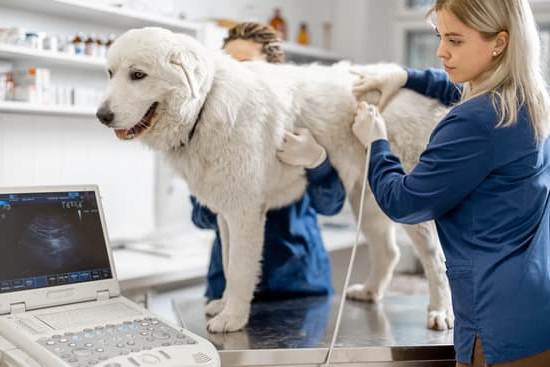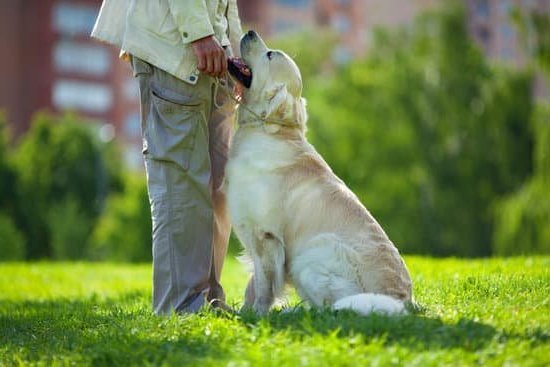Is it easier to train a puppy with another dog? Introducing a second dog to assist in the training of a new puppy has become an increasingly popular concept among pet owners. Many believe that having another dog in the household can positively impact the training process, providing socialization and learning opportunities for the young pup. In this article, we will explore the benefits, considerations, techniques, and challenges of using another dog in the training of a puppy.
Having another dog present during the training of a puppy can offer several benefits. The older dog can serve as a role model for good behavior, demonstrating commands and proper social interactions. Additionally, the presence of another dog can provide companionship and reduce separation anxiety for the puppy, making it more comfortable and confident during training sessions.
However, before introducing a second dog for training purposes, there are important considerations to take into account. Factors such as the temperament and compatibility of both dogs, as well as their individual training needs, must be evaluated to ensure a successful training experience. Understanding these key considerations is essential in determining whether dual-dog training is suitable for your specific situation.
Benefits of Having Another Dog for Puppy Training
Introducing another dog to aid in the training of a puppy can have numerous benefits. Here are some advantages of having another dog for puppy training:
1. Socialization: One of the main benefits of having another dog during puppy training is that it provides valuable socialization opportunities. Puppies can learn appropriate behavior from older, more experienced dogs, helping them understand how to interact and communicate effectively with their canine counterparts.
2. Role modeling: Another advantage is that the older dog can serve as a positive role model for the puppy. Through observation and imitation, the puppy can pick up on good behavior and habits from the older dog, such as proper leash manners or responding to basic commands.
3. Motivation: The presence of another dog during training sessions can also provide motivation for the puppy. Dogs are naturally pack animals, and having a companion to train with can make the experience more enjoyable for both dogs. Additionally, the competitive nature of dogs means that they may be more inclined to pay attention and learn when they see another dog successfully performing certain tasks.
Ultimately, having another dog present during puppy training is it easier to train a puppy with another dog not only enhances the learning process but also adds an element of fun and companionship for both dogs involved.
Considerations Before Introducing a Second Dog for Training
When considering introducing a second dog for training a puppy, there are several important factors to keep in mind. One consideration is the age and temperament of the existing dog.
It is important to choose a dog that is well-trained and has a calm and patient demeanor, as this can have a positive influence on the puppy. Additionally, the size and energy level of the second dog should be taken into account, as this can affect how they interact with the puppy during training.
Another crucial consideration before introducing a second dog for training is the dynamic between the two dogs. It is essential to ensure that both dogs get along well and have positive interactions. If there are any signs of aggression or tension between them, it may not be suitable to train them together. Proper introductions and supervised interactions are necessary to evaluate their compatibility for training purposes.
Furthermore, owners should assess their own ability to manage and train multiple dogs simultaneously. Training two dogs together requires great patience, consistency, and time investment from the owner. It may also involve using different techniques for each dog based on their individual needs and learning styles. Being prepared for this commitment is essential before deciding to train a puppy with another dog.
| Consideration | Description |
|---|---|
| Age and temperament | Important to choose a well-trained dog with a calm demeanor. |
| Dynamic between dogs | Crucial to ensure positive interactions between the two dogs before training. |
| Owner’s ability | Evaluate if owners are ready for the time investment in managing multiple dogs during training. |
Techniques for Using Another Dog in Puppy Training
When it comes to training a puppy with another dog, there are a variety of techniques that can be used to make the process as smooth as possible. Here are some effective methods for utilizing another dog in puppy training:
- Joint Training Sessions: One of the most beneficial ways to use another dog in puppy training is to have joint training sessions. This involves working with both dogs at the same time, allowing the older dog to demonstrate desired behaviors for the puppy. This can be particularly helpful for teaching commands and socialization.
- Mirror Training: Dogs are known to mimic each other’s behavior, so using mirror training can be highly effective. By having the older dog perform a behavior and then rewarding both dogs, the puppy will learn through observation and repetition.
- Team Playtime: Incorporating playtime into training sessions is important for bonding between the two dogs. Engaging in interactive games like fetch or tug-of-war not only provides physical exercise but also reinforces positive behaviors such as sharing and cooperation.
Using these techniques can greatly enhance the effectiveness of training a puppy with another dog. However, it’s important to consider individual personalities and temperaments when implementing these methods.
In addition, consistency, patience, and positive reinforcement are essential when using another dog in puppy training. It is crucial to maintain a calm and supportive environment during training sessions. This approach will create a harmonious learning experience for both dogs and help strengthen their bond as well.
The Role of Socialization in Dual-Dog Training
Training a puppy with another dog can be an effective way to help the puppy learn and develop good behavior. One of the key aspects that play a significant role in this type of training is socialization.
When a puppy interacts and learns from another well-behaved dog, it helps them understand and mimic appropriate behavior. This socialization process is crucial for the development of the puppy’s social skills, as they learn how to communicate, play, and behave properly within a canine community.
Socialization through dual-dog training also allows the puppy to learn important communication skills. They observe how the other dog interacts with humans, responds to commands, and navigates various environments. This observational learning can significantly benefit the puppy in understanding expectations and desired behaviors.
Furthermore, socialization with another dog during training enables the puppy to build confidence and adaptability. Learning from an older or more experienced dog can provide the necessary reassurance and guidance for the young pup to navigate new experiences and environments more confidently.
| Benefits of Socialization | Importance |
|---|---|
| Learn appropriate behavior | Crucial for social skills development |
| Develop communication skills | Observational learning from another dog |
| Build confidence and adaptability | Reassurance and guidance from an older dog |
Challenges and Potential Drawbacks of Training a Puppy With Another Dog
Training a puppy with another dog can have its challenges and potential drawbacks, despite the many benefits it offers. It’s important for dog owners to consider these factors before deciding to introduce a second dog for training.
Competitive Behavior
One of the main challenges of training a puppy with another dog is the potential for competitive behavior. When two dogs are being trained together, they may engage in competition for attention, treats, or rewards. This can lead to frustration and distraction during training sessions, making it harder for both dogs to focus and learn effectively.
Conflict in Training Methods
Another potential drawback is the conflict in training methods between the two dogs. Each dog may respond differently to specific training techniques, and their individual learning styles may clash. This can result in confusion for both dogs and make it challenging for the owner to effectively teach and reinforce commands.
Distraction and Lack of Focus
Additionally, having another dog present during training sessions can lead to distractions and a lack of focus for the puppy being trained. The presence of another dog may cause the puppy to become more interested in interacting with its companion rather than paying attention to the training exercises at hand.
Considering these potential drawbacks is important when deciding whether or not to train a puppy with another dog. It’s essential for owners to assess their own capabilities and resources before taking on such a task.
Success Stories and Case Studies of Puppies Trained With Another Dog
Case Study: Bella and Charlie
One success story of training a puppy with another dog is the case of Bella and Charlie. Bella, a rambunctious golden retriever puppy, was having difficulty with basic obedience training. Her owner decided to bring in Charlie, an older and well-behaved Labrador, to assist in the training process.
With Charlie by her side, Bella quickly learned commands such as sit, stay, and come. The presence of Charlie provided a positive role model for Bella to follow, making the training process smoother and more effective.
Behavioral Improvement
In another case study, a new puppy named Max was exhibiting signs of separation anxiety when left alone. To address this issue, Max’s owner introduced him to an older dog named Luna. Luna’s calm demeanor helped alleviate Max’s anxiety, and he quickly learned to be more comfortable being on his own. The presence of Luna served as both a support system for Max and as a means of positive reinforcement for desired behaviors.
Positive Impact on Socialization
Additionally, many case studies have shown that introducing a second dog during puppy training can have a positive impact on the socialization of the young canine. By interacting with an older or more experienced dog during training exercises, puppies can learn important social cues and behaviors that are essential for their development. This interaction
These case studies illustrate the potential benefits of training a puppy with another dog. However, it is important to note that individual results may vary based on the personalities and temperaments of both dogs involved in the training process.
Tips for Managing Multiple Dog Training Sessions
Managing training sessions for multiple dogs can be a challenging task, but it can also be incredibly rewarding. One important tip for managing these sessions is to set clear boundaries and guidelines for each dog. This will help prevent any confusion or potential conflict between the dogs during training. It’s also crucial to have enough space and resources to accommodate all the dogs during the training sessions, such as treats, toys, and designated areas for each dog to work.
Another tip is to establish a consistent routine for the training sessions. Dogs thrive on consistency, so having a regular schedule for training will help them understand what is expected of them and when. This can also help in managing their behavior before, during, and after the training session.
Additionally, it’s essential to remain patient and attentive during these sessions. Each dog has its own unique learning style and pace, so it’s important to tailor the training approach to suit each individual dog. Being patient and understanding with each dog will not only benefit their progress but also strengthen your bond with them.
Conclusion
In conclusion, the decision to train a puppy with another dog is not one to be taken lightly. While there are clear benefits to this approach, such as accelerated learning through observation and imitation, increased socialization, and the potential for decreased separation anxiety, there are also important considerations and potential drawbacks. It’s crucial for pet owners to weigh the pros and cons carefully before making a decision.
One of the key benefits of training a puppy with another dog is the opportunity for social learning. Puppies often learn by watching and imitating other dogs, so having a well-behaved canine role model can greatly facilitate the training process. Additionally, multiple dogs in the household can provide each other with companionship and mental stimulation, reducing boredom and destructive behavior.
However, there are important factors to consider before introducing a second dog for training. These include the individual personalities of both dogs, their compatibility, and their ability to get along.
Additionally, pet owners must be prepared for challenges that may arise during dual-dog training sessions, such as competition for attention or resources. Ultimately, while it can be easier to train a puppy with another dog in many cases, it’s important to carefully assess whether this approach is suitable for both the puppy and the existing dog in the household.
Frequently Asked Questions
Are Puppies Easier With Another Dog?
Introducing a puppy to a household with another dog can have its pros and cons. On one hand, the older dog can help socialize the puppy and provide companionship. However, it can also be challenging if the older dog is not welcoming.
Is It Easier to Train a Puppy With an Older Dog?
Training a puppy with an older dog present can have its advantages. The older dog can serve as a role model for the puppy and help reinforce good behavior. However, it’s important to still focus on individual training for each dog.
Are Dogs Happier With a Second Dog?
Many dogs do enjoy having another canine companion. It can alleviate boredom, provide social interaction, and even reduce separation anxiety. Of course, every dog is different and some may prefer being the sole pet in the household.

Welcome to the blog! I am a professional dog trainer and have been working with dogs for many years. In this blog, I will be discussing various topics related to dog training, including tips, tricks, and advice. I hope you find this information helpful and informative. Thanks for reading!





